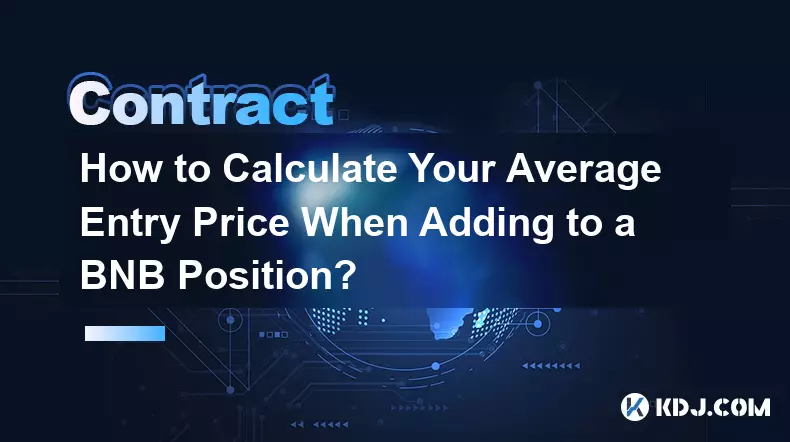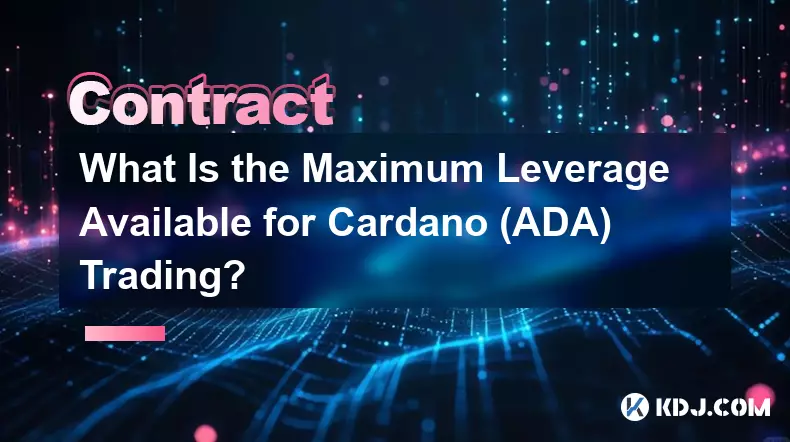-
 bitcoin
bitcoin $112139.774561 USD
-1.82% -
 ethereum
ethereum $3970.329568 USD
-3.85% -
 tether
tether $1.000078 USD
0.01% -
 xrp
xrp $2.611653 USD
-1.08% -
 bnb
bnb $1099.982737 USD
-3.67% -
 solana
solana $193.702075 USD
-3.33% -
 usd-coin
usd-coin $0.999832 USD
0.00% -
 dogecoin
dogecoin $0.193302 USD
-3.68% -
 tron
tron $0.294800 USD
-1.45% -
 cardano
cardano $0.642524 USD
-3.89% -
 hyperliquid
hyperliquid $47.524848 USD
1.27% -
 chainlink
chainlink $17.842256 USD
-2.41% -
 bitcoin-cash
bitcoin-cash $561.265025 USD
1.01% -
 stellar
stellar $0.317292 USD
-2.07% -
 ethena-usde
ethena-usde $0.999303 USD
0.01%
What is auto-deleveraging (ADL) and how does it affect ETH contracts?
Auto-deleveraging (ADL) protects crypto exchanges by closing profitable opposing positions when liquidations exceed insurance funds, commonly affecting high-leverage ETH perpetual traders during volatility.
Oct 23, 2025 at 11:54 pm

Understanding Auto-Deleveraging in Crypto Derivatives
Auto-deleveraging (ADL) is a risk mitigation mechanism used by certain derivatives exchanges to manage the liquidation of leveraged positions when insufficient insurance funds or market depth exist to cover losses. In volatile markets, especially during sharp price movements in assets like Ethereum (ETH), traders with high leverage can be liquidated rapidly. When the platform’s insurance fund cannot absorb these losses, ADL steps in to reduce counterparty exposure by forcibly closing offsetting positions.
1. ADL activates when a trader's position is liquidated and the loss exceeds what the exchange's insurance fund can cover.
- Instead of relying solely on the insurance fund, the system begins closing profitable opposing positions to recover funds.
- Traders with highly leveraged winning positions are prioritized for auto-deleveraging based on their profit and leverage levels.
- The process ensures that the exchange avoids systemic insolvency due to cascading liquidations.
- ADL is more common on decentralized and peer-to-peer perpetual swap platforms where counterparties directly expose themselves to each other.
How ADL Impacts ETH Perpetual Contracts
Ethereum contracts, particularly perpetual futures traded with high leverage, are prone to rapid price swings due to network upgrades, macroeconomic factors, or large whale movements. These fluctuations increase the likelihood of forced liquidations, which in turn may trigger ADL events.
1. During a sudden drop in ETH price, long positions get liquidated en masse, potentially overwhelming the insurance fund.
- To settle these losses, the exchange initiates ADL, targeting short sellers who are currently in profit.
- Highly leveraged profitable shorts are closed incrementally until sufficient funds are recovered.
- Affected traders may see their positions reduced without prior warning, even if their margin levels are healthy.
- This mechanism preserves platform stability but introduces execution risk for top-tier profitable traders.
Risk Management Strategies Around ADL
Traders engaging in ETH derivatives must account for ADL as part of their risk framework. While it protects the broader ecosystem, individual traders can suffer unexpected position closures during extreme volatility.
1. Monitoring real-time ADL queues on exchange dashboards helps anticipate potential forced exits.
- Reducing leverage decreases the probability of being selected in an ADL event.
- Diversifying across exchanges with different risk models minimizes exposure to platforms heavily reliant on ADL.
- Setting tighter stop-losses and avoiding over-concentration in one-side trades reduces vulnerability.
- Keeping track of open interest and funding rates provides early signals of market imbalance that could lead to ADL activation.
Frequently Asked Questions
What triggers an ADL event on a crypto exchange?An ADL event is triggered when a leveraged position is liquidated and the loss cannot be fully absorbed by the exchange’s insurance fund. The system then automatically closes profitable opposite-side positions to cover the shortfall.
Can traders avoid being affected by ADL?Yes, traders can reduce the risk by maintaining lower leverage, staying out of the top tier of the ADL queue, and choosing exchanges with robust insurance funds or alternative risk management systems.
Is ADL used in spot trading markets?No, ADL is specific to derivatives trading, particularly perpetual contracts with leverage. Spot markets do not involve leveraged positions or counterparty obligations, so ADL does not apply.
Which ETH contract types are most susceptible to ADL?Highly leveraged perpetual futures contracts on peer-to-peer or hybrid exchanges are most susceptible. Isolated margin positions with extreme leverage are typically prioritized during ADL sequences.
Disclaimer:info@kdj.com
The information provided is not trading advice. kdj.com does not assume any responsibility for any investments made based on the information provided in this article. Cryptocurrencies are highly volatile and it is highly recommended that you invest with caution after thorough research!
If you believe that the content used on this website infringes your copyright, please contact us immediately (info@kdj.com) and we will delete it promptly.
- Essex Post Office, 5p Coins, and King Charles: A Royal Mint Revelation!
- 2025-10-23 10:30:16
- Waymo's Newark Airport AV Tests: Alphabet's AI Gamble Pays Off?
- 2025-10-23 10:30:16
- King Charles 5p Coins: A Royal Flush in Your Pocket?
- 2025-10-23 10:35:18
- Solana, Crypto Advisory, and Forward Industries: A New York Minute on the Future of Finance
- 2025-10-23 08:51:22
- MAGACOIN: Ethereum Whales Dive into the Hottest Presale of 2025
- 2025-10-23 08:51:22
- Kadena's End of the Road? KDA Token Plummets Amid Project Abandonment
- 2025-10-23 08:55:34
Related knowledge

How to Calculate Your Average Entry Price When Adding to a BNB Position?
Oct 28,2025 at 12:24am
Understanding the Concept of Average Entry Price1. The average entry price is a crucial metric for traders who accumulate positions in assets like BNB...

What Is the Maximum Leverage Available for Cardano (ADA) Trading?
Oct 26,2025 at 12:18pm
Understanding Leverage in Cardano (ADA) Trading1. Leverage allows traders to control a larger position using a smaller amount of capital. In the conte...

What Are the Fees Involved in Trading Solana (SOL) Perpetual Swaps?
Oct 26,2025 at 07:36am
Fees Structure in Solana Perpetual Swap Trading1. Trading perpetual swaps on Solana-based decentralized exchanges involves several types of fees that ...

How to Trade Ethereum (ETH) Breakouts with High Leverage Safely?
Oct 26,2025 at 02:19am
Understanding High Leverage in Ethereum Trading1. High leverage allows traders to control large positions with relatively small capital, amplifying bo...

What Is an Insurance Fund in Bitcoin (BTC) Derivatives Trading?
Oct 29,2025 at 08:18am
Understanding the Role of Insurance Funds in BTC Derivatives1. In Bitcoin derivatives trading, an insurance fund acts as a financial backstop designed...

How to Set Multiple Take-Profit Orders for a Single BNB Position?
Oct 27,2025 at 05:00pm
Understanding Multiple Take-Profit Strategies in BNB Trading1. Traders in the cryptocurrency market often seek to maximize gains while minimizing emot...

How to Calculate Your Average Entry Price When Adding to a BNB Position?
Oct 28,2025 at 12:24am
Understanding the Concept of Average Entry Price1. The average entry price is a crucial metric for traders who accumulate positions in assets like BNB...

What Is the Maximum Leverage Available for Cardano (ADA) Trading?
Oct 26,2025 at 12:18pm
Understanding Leverage in Cardano (ADA) Trading1. Leverage allows traders to control a larger position using a smaller amount of capital. In the conte...

What Are the Fees Involved in Trading Solana (SOL) Perpetual Swaps?
Oct 26,2025 at 07:36am
Fees Structure in Solana Perpetual Swap Trading1. Trading perpetual swaps on Solana-based decentralized exchanges involves several types of fees that ...

How to Trade Ethereum (ETH) Breakouts with High Leverage Safely?
Oct 26,2025 at 02:19am
Understanding High Leverage in Ethereum Trading1. High leverage allows traders to control large positions with relatively small capital, amplifying bo...

What Is an Insurance Fund in Bitcoin (BTC) Derivatives Trading?
Oct 29,2025 at 08:18am
Understanding the Role of Insurance Funds in BTC Derivatives1. In Bitcoin derivatives trading, an insurance fund acts as a financial backstop designed...

How to Set Multiple Take-Profit Orders for a Single BNB Position?
Oct 27,2025 at 05:00pm
Understanding Multiple Take-Profit Strategies in BNB Trading1. Traders in the cryptocurrency market often seek to maximize gains while minimizing emot...
See all articles










































































